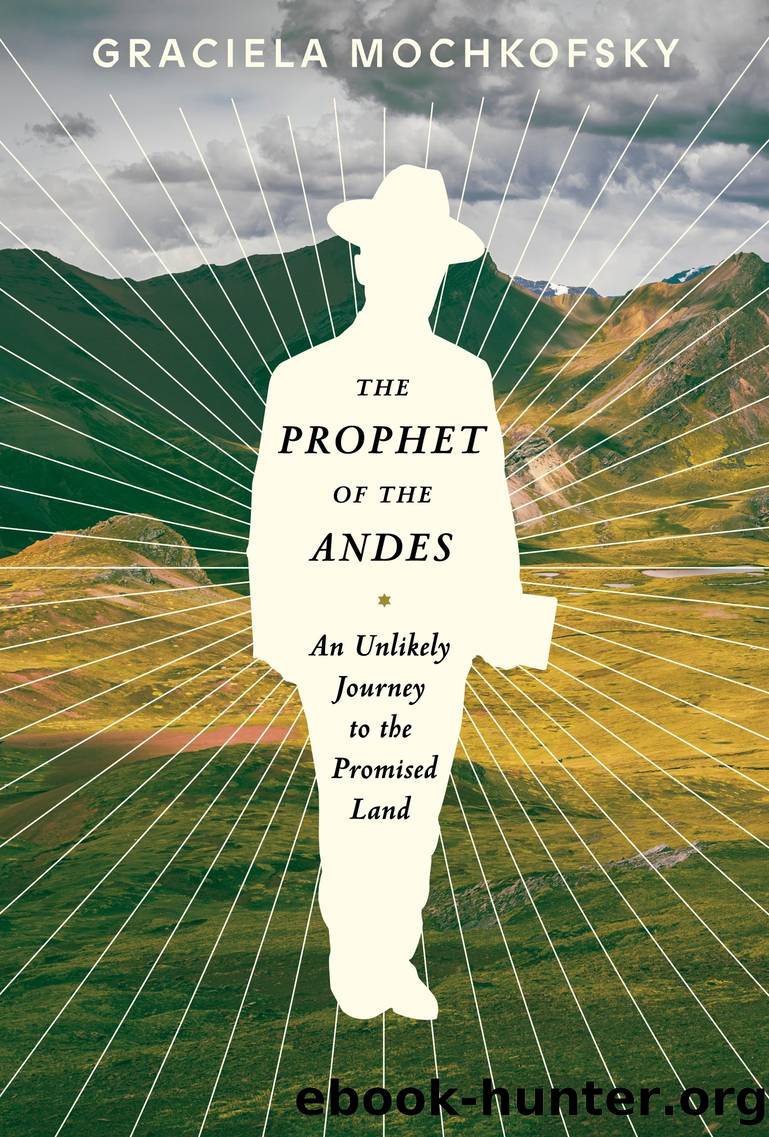The Prophet of the Andes by Graciela Mochkofsky

Author:Graciela Mochkofsky [Mochkofsky, Graciela]
Language: eng
Format: epub
Publisher: Knopf Doubleday Publishing Group
Published: 2022-08-02T00:00:00+00:00
* * *
â
Maybe that was enough for God. But was it enough for the Chief Rabbinate?
Probably not. They had to prove theyâd changed not only on the inside but also on the outside. They could no longer call themselves Israel, because Israel was the country they wanted to take them in. They had to form a new community, a community that would make their observance and desire to be Jews clear to all.
After much deliberation they chose the name Children of Moses, to signal their acceptance of the Torahâs commandmentsâbut in Hebrew, not in Spanish, because it was Israel, or its Chief Rabbinate, whom they were addressing.
Bnei Moshe.
In mid-Sivan of the year 5746âJune 1986 in Peruâthey drafted the new organizationâs founding document.[16] The Bnei Moshe wanted to âbuild a group that was compact in every aspectâ so as to ensure âspiritual-material benefit to each of its members, under steadfast and proper ideological guidance.â The main objectives were to âpraise our Lord in the best way possible and educate ourselves, elders and children alike, in the divine doctrine and in all realms possible.â
Leadership was formally democratic, as it had been in Israel of God. Everything was to be decided by majority, but any resolution could be âinvalidated in the event that it went against the Torah, [the] Shulchan Aruch,â or sought âto do harm.â They still called one another brother and sister; a vote by all members would elect the executive committee. At the first election, held one winter night, Segundoâs son-in-law Pepe Rengifo was elected president. Segundo, modestly, ran for and was elected spokesperson. Two other family members also ended up on the executive committee: Segundoâs son Josué was voted second spokesperson, and his daughter Eva became treasurer.
There were ten âprinciples of the community,â as there were tablets of the Law given to Moses, which established general moral order: constancy, punctuality, mutual aid, order, responsibility, effort, discipline, respect, organization, and tolerance.
In order to join Bnei Moshe, one had not only to accept Mosaic Law but to âlove it, be advanced or moderately so in knowledge of the Torah and practice it to the greatest degree possible,â enjoy an honorable reputation, abide by the groupâs agreements, be over thirteen years of age, and pay a monthly fee. âAttending synagogue on the three high holy daysâ and observing the Sabbath each week were also required.
As per the Shulchan Aruch: âIt is the duty of all men to choose a synagogue in which to pray permanently and select within it a regular seat for worship.â This mandate occasioned a new dilemma: the Bnei Moshe had no synagogue. But why build one if they were preparing to move to Israel? It was essential to consider what might happen to it once they were no longer there. A synagogue was a sacred place. What if someone turned it into a chicken coop? They could never allow that: if they built one, they had to be responsible for its future. The only solution was to ensure that the synagogue remain in Jewish hands; only Jews would care for it.
Download
This site does not store any files on its server. We only index and link to content provided by other sites. Please contact the content providers to delete copyright contents if any and email us, we'll remove relevant links or contents immediately.
| Military | Political |
| Presidents & Heads of State | Religious |
| Rich & Famous | Royalty |
| Social Activists |
Waking Up in Heaven: A True Story of Brokenness, Heaven, and Life Again by McVea Crystal & Tresniowski Alex(37670)
Empire of the Sikhs by Patwant Singh(22974)
We're Going to Need More Wine by Gabrielle Union(18967)
Hans Sturm: A Soldier's Odyssey on the Eastern Front by Gordon Williamson(18479)
Leonardo da Vinci by Walter Isaacson(13179)
The Radium Girls by Kate Moore(11921)
Tools of Titans by Timothy Ferriss(8216)
Educated by Tara Westover(7940)
How to Be a Bawse: A Guide to Conquering Life by Lilly Singh(7390)
Permanent Record by Edward Snowden(5737)
The Last Black Unicorn by Tiffany Haddish(5558)
The Rise and Fall of Senator Joe McCarthy by James Cross Giblin(5228)
Promise Me, Dad by Joe Biden(5087)
The Wind in My Hair by Masih Alinejad(5033)
A Higher Loyalty: Truth, Lies, and Leadership by James Comey(4842)
The Crown by Robert Lacey(4722)
The Iron Duke by The Iron Duke(4291)
Joan of Arc by Mary Gordon(4013)
Stalin by Stephen Kotkin(3875)
